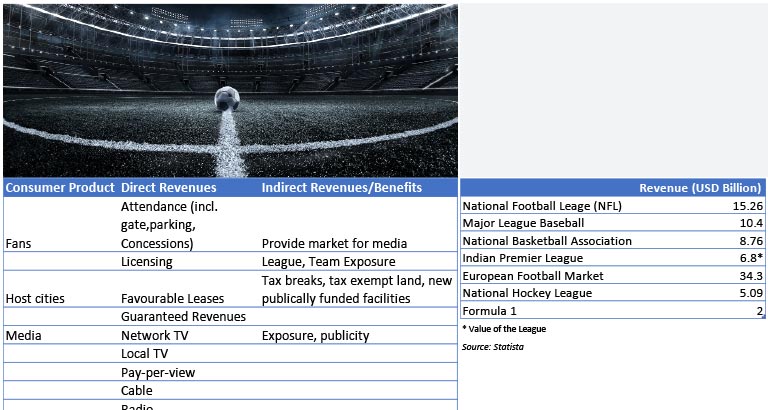
Business Expert, Pria Masson Tanwar, delves into the business world of sports.
With the Formula One races at the forefront for the region, this month I decided to delve into a business that surrounds our lives, entertains us and has sustained despite the pandemic - Sports. As a business, it meets the hallmark criteria of sustainability and scalability – and this holds true for the core sport as well as the entire ecosystem that sustains it.
As a primer of sorts, for any business, to understand the dynamics, understanding the product is the most essential step. And sports is a vast topic. To simplify it into a single product, we need to look at the reason sports exist at their most basic level – to entertain. Sports are actually a very specialised form of entertainment – and one that has sustained since the time of gladiators. Today however, the business has come a very long way. It is now a sophisticated system that comprises a significant backend support, that uses advanced technologies such as Natural Language Generation (NLG) which uses structured data to create thousands of human-sounding narratives at a rate faster than even the best sports journalist could write. This frees up the actual journalists to write more analytical pieces and reach the audience in unique ways.
The sports ecosystem is quite complex. At the most basic level we have the leagues which is where the players belong. This level itself is supported by the coaches, therapists, sports doctors, etc. We then move on to suppliers – so shoes, rackets, balls, cars, etc. Next is fan engagement or branding, marketing, and all forms of interaction outside of the league itself. The physical infrastructure to enable the sport comes next i.e., the stadium, the track, the arena. There is also a vast number of people and an entire ecosystem that manages the clubs within a given league. This then brings us to the layer of managing partnerships and sponsorships for the leagues as well as players. To further buffer this system there is the media layer that connects the league with its audience.
Just by themselves, the major leagues of the world generate significant revenues and based on broad level estimates, the revenues of sports are varied and provides benefits to a vast ecosystem that supports it.
 From a financial perspective however, while sporting is a high revenue generating business, the costs are also high. The infrastructure required, the equipment, the training process, the constant media engagement to stay at the top of the audience mind – all of this is expensive. In addition to the high running costs on infrastructure and support systems, the salary costs of most leagues comprise and excess of 50 percent of the total cost base. Usually, these would continue despite utilisation of the players or the facilities.
From a financial perspective however, while sporting is a high revenue generating business, the costs are also high. The infrastructure required, the equipment, the training process, the constant media engagement to stay at the top of the audience mind – all of this is expensive. In addition to the high running costs on infrastructure and support systems, the salary costs of most leagues comprise and excess of 50 percent of the total cost base. Usually, these would continue despite utilisation of the players or the facilities.
At every layer, the system is complex. This pandemic, however, has shown us that the core aim of entertaining shines through. Across the world, several sporting events have seen players play to an empty stadium. However, the rights to broadcast the same games, the online events, the sponsorship, branding, and marketing, all have helped to ensure that the primary loss is the gate fee. The significant audience that witnesses these from their television sets are still active and waiting to be entertained.
Pria is a business expert, consultant and advisor. You can follow Pria at her Instagram handle businessclues33 or read more of her articles at www.business-clues.com



